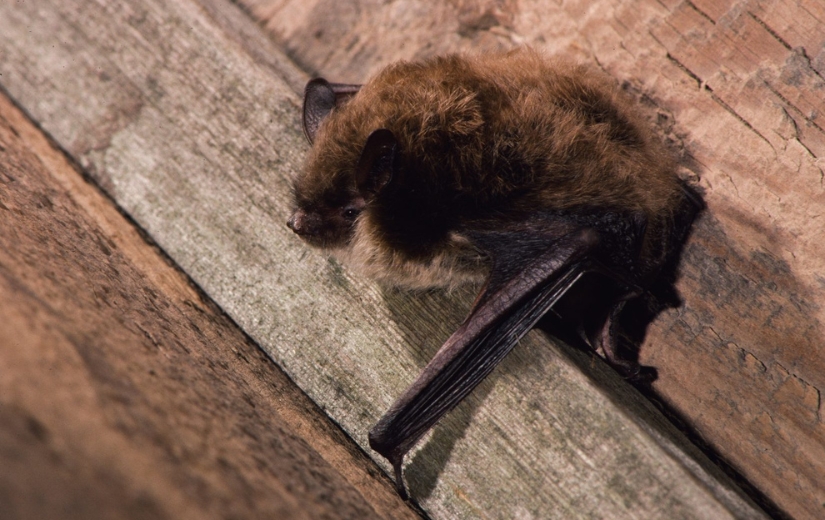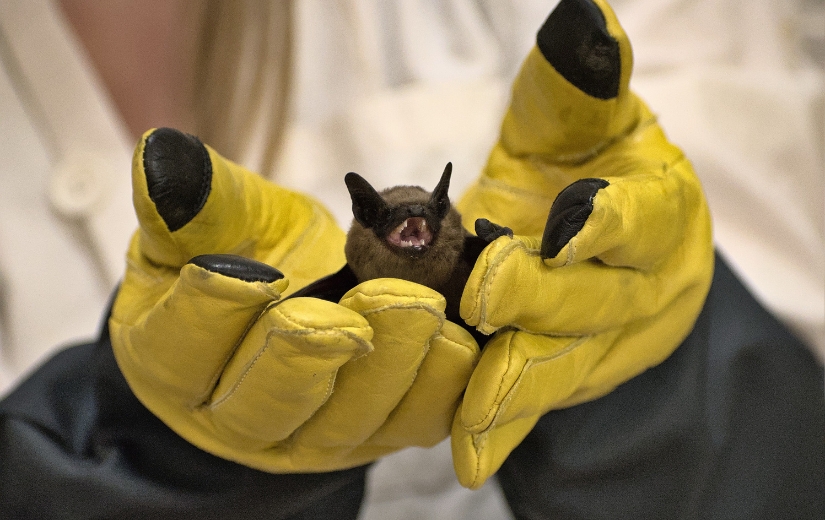Bat to the bone? All about bats
You might not know it, but bats are essential for balancing B.C.’s ecosystems. They perform valuable services as insect predators, pollinators, seed dispersers and nutrient cyclers.
Bats are among the most misunderstood animals in the world – this, combined with generally negative publicity, has led to declines in bat populations around the world. There are 16 species of bats in our province, with many of them listed as threatened or vulnerable.
Human activities are the primary cause of bat decline, and here’s how you can help.

Humane bat removal
Got bats? Dark, warm, and quiet attic spaces are, unfortunately, ideal bat habitats. Bats don’t usually occupy buildings during winter months – instead, choosing to hibernate in mines or caves from October to March.
Killing bats for “nuisance” reasons is illegal, and it is unlawful to disturb them during their breeding season (May through August). Bats are generally quiet neighbours that keep mosquitoes and other bugs at bay and do not need to be evicted if there is little chance for human contact. However, eviction may be desirable if guano cannot be regularly cleaned, or if bats enter human living spaces. Read our best practices for bats (PDF.)
How to evict bats:
- Find entry points: look for discoloured rub marks or guano around openings. In summer, look for bats exiting the building before dusk to ~30 minutes after dark.
- Provide a bat box: providing an exterior bat house can help discourage bats from returning to the building but allow them to stay in the area. Consult a community bat expert for advice on placement and design.
- Plan your eviction: the best time is October to March, possibly extending from September to April, depending on the colony.
- Use one-way doors or bat cones: installed at the entry point(s), they will allow bats to leave but not re-enter. Leave one-way doors in place for 5-7 nights to make sure all the bats are out.
- Seal any openings: before sealing, use a flashlight to thoroughly check any cracks, crevices or corners for bats. Block gaps around chimneys, window air conditioners, and openings in interior walls that lead to cellars or attics.
Where available, call an AnimalKind accredited wildlife control company to humanely evict bats for you.

If a bat accidentally gets stuck inside, they will need to be captured and released as quickly as possible. Always wear thick leather gloves. Bats can be gently captured using a glass or plastic container, and sliding something underneath the opening to contain them, or using a tool like a spatula or folded cardboard to scoop them into the container.
To release a bat, place them on a tree or other vertical surface so they can fly away – bats can not take off from the ground, and need the height to start their flight.
If the bat has been trapped longer than 24 hours, call the BC SPCA Animal Helpline for advice at 1-855-622-7722.
Know the facts about rabies
It is true that bats are a reservoir for rabies in British Columbia: they can carry and transmit the disease without showing any signs themselves. However, random sampling of bat populations has revealed that less than 0.5% of bats test positive for rabies.
Rabies is a serious illness and can be fatal, but the risk of getting rabies from a bat is very low in B.C. You don’t need to be afraid of bats, but always be careful. Never attempt to handle bats with bare hands. If a bat has had direct contact with people or pets, contact your physician, veterinarian and/or local public health authority immediately.

Paws off the bats!
Cats are a major cause of mortality for bats. While, of course, dangerous for bats, this also puts cats at risk of various wildlife diseases, including rabies. Hunting is a natural behaviour for cats. When allowed to roam outdoors, they can prey upon a range of wildlife species.
The most effective way to prevent cats from harming wildlife is to keep them indoors. This helps not only keep wildlife safe but also helps keep cats safe too.
Learn more about protecting wildlife from cats, and how to enrich your indoor cat’s life.
White-nose syndrome
White-nose syndrome (WNS) is a fungal disease spread bat-to-bat, that was introduced by people entering caves where bats live. WNS is named for the white fungus that grows on the nose and bodies of infected bats. Bats die of starvation after waking up from hibernation to fight the fungus.
First discovered in the state of New York in 2006, WNS has now spread to 38 states and eight provinces, decimating bat populations. Although WNS has not been observed in B.C. yet, the fungus that causes WNS has been detected in bat guano in the Grand Forks, B.C. area.
If you suspect WNS, find a dead bat, or notice unusual winter bat activity (November through May), contact the BC Community Bat Programs.
These frequent fliers are a critical part of B.C.’s ecosystem. It’s up to us to learn more about them and make humane choices to protect bat populations.
Stay informed!
Receive AnimalKind news 4 to 6 times per year.
The BC SPCA processes your personal information to provide you with the products and services you have requested as well as for advertising and analytics purposes. More information on uses and how you can opt out may be found in our privacy policy.